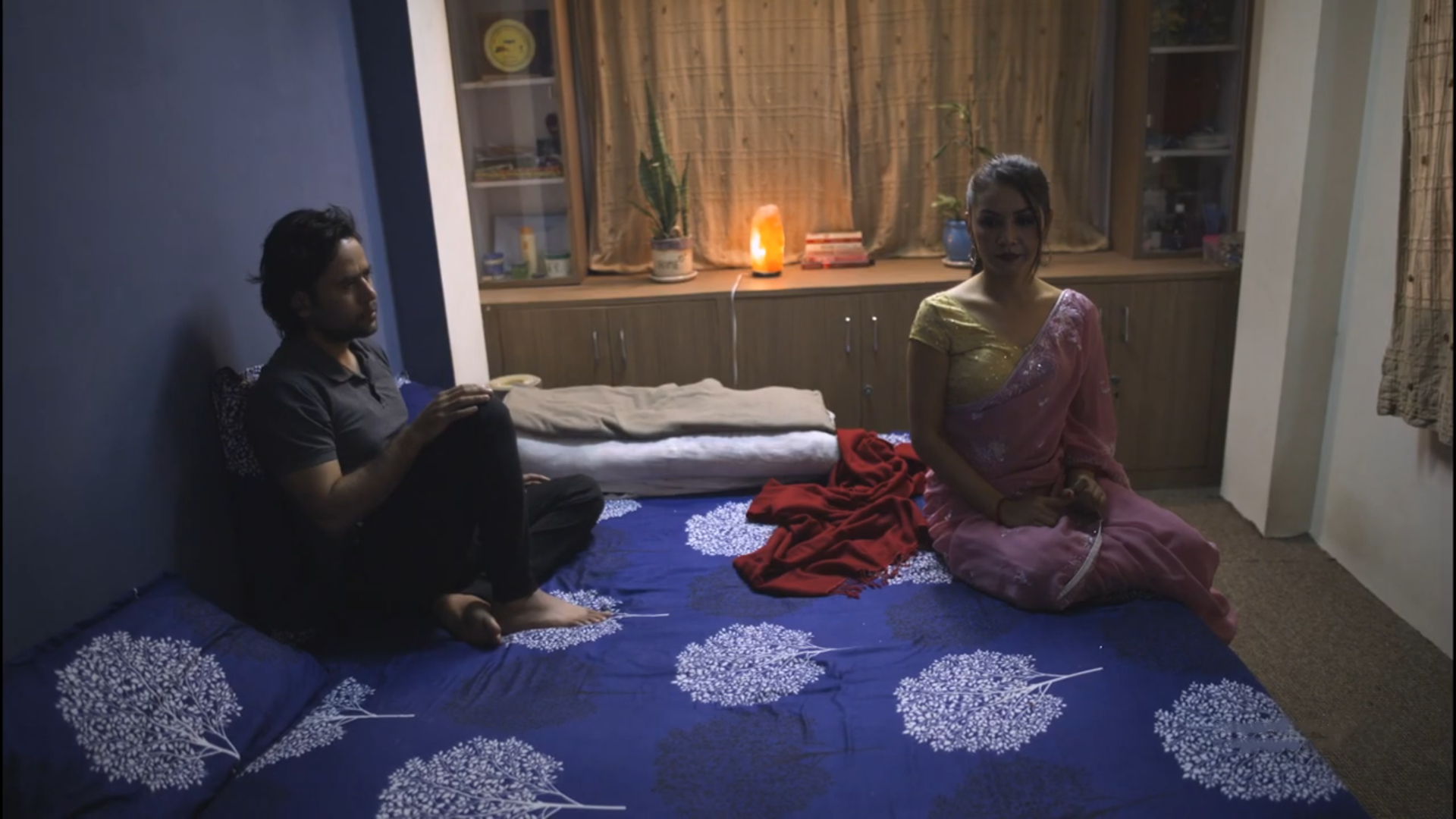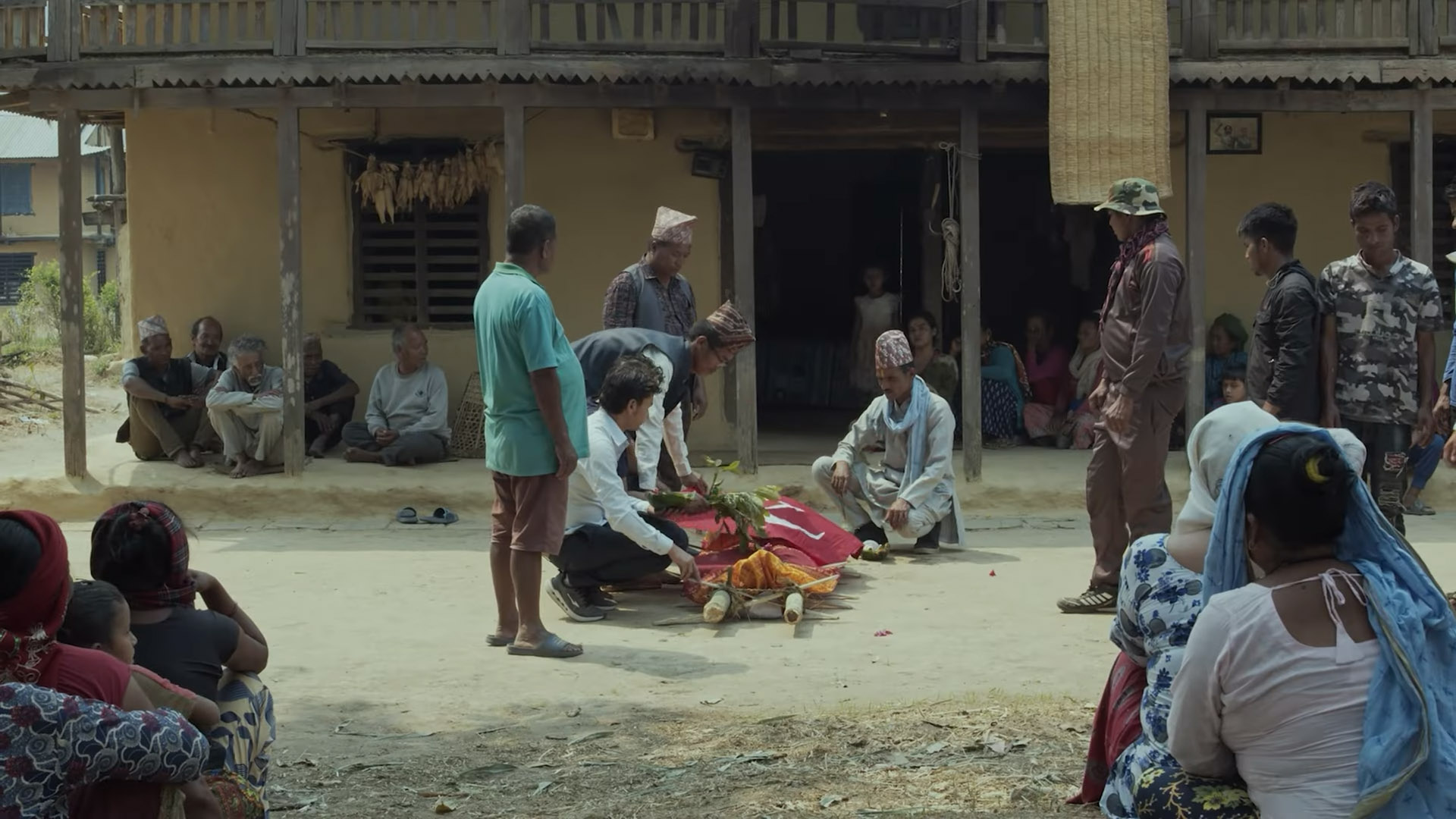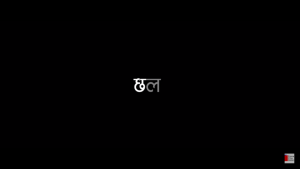
A male character portrayed by Jeevan Bhattarai is depicted watching a video on his laptop, accompanied by the sound of moaning. While the specific content of the video is not revealed, his expression and the background sound strongly suggest he is watching pornography. Abruptly, he folds his laptop. He looks disturbed and starts to scream. After a while he calls Meera, played by Benisha Hamal, who is portrayed as a sex worker. He invites Meera to his place, requesting that she wear a sari.
Meera arrives, and the male character starts a random conversation with her. For instance, he tells her about his love for football when he was a child. He then asks her about her desires, to which she replies that she desires to be a different character that she saw while watching the theatre in her village. The conversation might sound strange to you because such conversations with a sex worker are not typically expected in films. As the conversation progresses, Meera rushes to fulfil her role as a sex worker, but the male character is reluctant and still wants to talk. He then began to smell Meera’s sari, ignoring her presence.
Suddenly, he screams “Aama” (mother). So, in this peculiar manner, Rato Paccheuri (A tale of turmoil, temptation & triumph) directed by Miraz Roshan, begins.
The realistic portrayal of sex workers’ life

At the beginning, it feels like the film is entirely about the male character, but things take a different turn as the story unfolds. The film revolves around the story of Meera, a sex worker, whose life is full of pain and agony.
Meera, the central character of the film, represents hundreds of sex workers who have to endure humiliation and unfairness at every step. The film which is based on real characters and stories has vividly shown the life of sex workers. It has realistically depicted the mistreatment in society, reasons to enter such a profession, and negligence by the government.
In most films, when depicting the story of a sex worker, only their pain is shown. However, Rato Paccheuri stands out in this context. The film goes beyond the personal problems of a sex worker. It also explores what it takes to be the child of a sex worker, depicting how challenging it is for the offspring to come to terms with one of their parents being in that profession. Those whose parents are or have been sex workers can easily relate to the film.
In many films, sex workers are portrayed as flirty characters who always approach people for sex. But in this film things are different. In one scene, Meera’s husband himself brings a client for her. This illustrates the difficult life she has been surviving.
The technical aspect of the film

Talking about the technical aspect of a film, the film has done a decent job. In regards to camera work, they are simple. The DOP done by Hari Humagain has beautifully captured the scenes even in the low lights. The close-up shots intensely capture Meera’s emotions and expressions as she expresses her frustration with living as a sex worker in one of the scenes.
All the actors, specifically Meera and the male character, have done a commendable job with their acting skills, making things look natural and emotional. In the scene where the male character listens to Meera’s frustration, both of their acting skills shine through.
The background score of the film is another element that has brought life to the acting skills of the actors. Thanks to the background music scorer KM Joshi for making it happen. However, the makers of the film have failed to recognise a few other scenes where the background score could have enhanced the beauty even further. Specifically in a scene where Meera is applying make-up in front of a mirror and hangs her pote, a traditional beaded necklace, before she leaves her home and in the scene where Meera and the male character are holding a deep conversation about their life, the need of a poignant background score can be felt.
The movie has an intriguing ending.
Let’s not spoil it here. However, it may seem confusing at first, but it later becomes clear. The use of a red-coloured shawl at the end signifies the hope that Meera will rise against the discrimination and difficulties she has been enduring and achieve a dignified life.
Overall, this 25-minute-long film is worth watching not just because it revolves around a rarely discussed issue, but also because it provides a different perspective on the life of a sex worker.


























